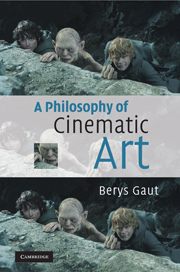1 - The challenges to cinema as an art
Published online by Cambridge University Press: 01 March 2010
Summary
Filmmakers during the first two decades of the new medium's existence thought of themselves sometimes as scientists, sometimes as explorers, sometimes as entertainers, but hardly ever as artists, as pioneers of a new artistic medium. D. W. Griffith in his earliest Biograph films from 1908 did not dare put his name on the credits, lest his ambitions in the legitimate theatre be undermined by his low-life escapades with celluloid. Only gradually did he come to think of his films as works of art; and if Birth of a Nation (1915) and Intolerance (1916) look now like deeply problematic achievements, they did at least represent the self-conscious striving to make films that are art. Though filmmakers took some time to think of their activity as a kind of art, theorists took longer. Hugo Munsterberg's pioneering The Photoplay: A Psychological Study (1916) represents the first sustained attempt to defend film as an art. But even in 1933 Rudolf Arnheim in his Film (revised as Film as Art in 1957) could think that the leading issue in film theory was whether film is an art. Indeed, Arnheim famously defended silent film as an art, but looked with some apprehension at the newly invented sound film, which he thought of as a threat to the artistic status of cinema. A great deal of classical film theory, as we noted in the Introduction, was concerned with arguing that cinema, despite its mechanical, photographic basis, is an art form.
- Type
- Chapter
- Information
- A Philosophy of Cinematic Art , pp. 21 - 50Publisher: Cambridge University PressPrint publication year: 2010



